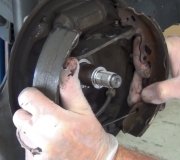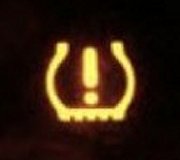Dandy. A slowly-sinking brake pedal is pretty common, but with a couple of different causes. External leaks that leak slowly include rear wheel cylinders and rusted steel lines. Both of those will result in the brake fluid level dropping in the reservoir.
It is also common for a seal to leak inside the master cylinder resulting in a slowly-sinking brake pedal, but the difference is the fluid level will not drop. This is often the result of improper service procedures or being surprised by a sudden leak, like a ruptured rubber flex hose. Over time, crud and corrosion build up in the lower halves of the bores where the pistons don't normally travel. When a do-it-yourselfer or an inexperienced mechanic pushes the brake pedal all the way to the floor during the bleeding procedure, or when a surprised driver runs the pedal to the floor, the pistons are run over that corrosion and the seals can be ripped. That lets the brake fluid sneak past the seal rather than being pushed down to the wheels. To avoid this, we never push the brake pedal more than half way to the floor when pedal-bleeding with a helper.
Tuesday, February 27th, 2018 AT 11:07 AM



